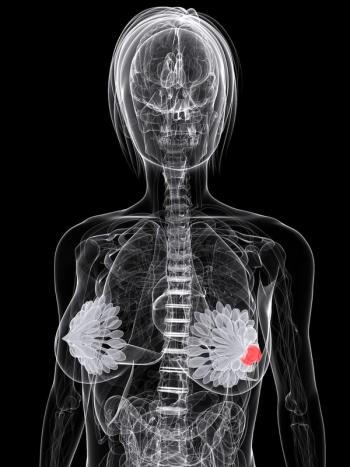
Oncology NEWS International
- Oncology NEWS International Vol 11 No 3
- Volume 11
- Issue 3
Rituximab Improves Paclitaxel/Topotecan Salvage Efficacy in NHL
ORLANDO-Adding rituximab (Rituxan) to paclitaxel (Taxol)/topotecan (Hycamtin) salvage therapy raises response rates by about 25%, more than triples complete response rates, and is effective in both primary refractory and relapsed aggressive B-cell lymphomas.
ORLANDOAdding rituximab (Rituxan) to paclitaxel (Taxol)/topotecan (Hycamtin) salvage therapy raises response rates by about 25%, more than triples complete response rates, and is effective in both primary refractory and relapsed aggressive B-cell lymphomas.
Phase II Study
Anas Younes, MD, and colleagues from M. D. Anderson Cancer Center reported data from a 45-patient phase II study of the paclitaxel/topotecan/rituximab regimen in a poster presentation at the 43rd Annual Meeting of the American Society of Hematology (ASH abstract 1456).
"We concluded that rituximab improves the response rate of paclitaxel/topotecan and increases the proportion of complete remissions. There was not a significantly different toxicity profile with the addition of rituximab. However, this is not frontline treatment yet," Dr. Younes told ONI in an interview.
The study enrolled 45 patients with relapsed or refractory aggressive non-Hodgkin’s lymphoma (NHL) and included 34 with diffuse large cell, 4 with follicular large cell, and 7 with transformed disease. Twenty patients (44%) had primary refractory disease, and 25 (56%) had relapsed after responding to previous therapy. Most patients had received only a single previous regimen, and 15 (33%) had received prior cytarabine/platinum. The median age was 58.
The regimen included paclitaxel 200 mg/m²IV given over 3 hours on day 1, topotecan 1 mg/m² IV given each day on days 1 to 5, and rituximab 375 mg/m² given 1 day before each paclitaxel/topotecan course. All patients also received prophylactic filgrastim (G-CSF, Neupogen). Courses were repeated every 3 weeks, and patients received a median of three courses.
In patients with primary refractory disease, adding rituximab to the regimen increased the response rate to 55% from the 31% Dr. Younes had reported in a previous study of paclitaxel/topotecan in a similar group of patients.
The quality of response also improved dramatically, with complete responses rising from 6% with paclitaxel/topotecan to 25% with the three-drug regimen.
The combination had similar effects in patients who had relapsed after initially responding to therapy. Adding rituximab increased the response rate to 80% from the 65% seen previously with paclitaxel/topotecan, and increased the complete response rate from 18% to 60%.
Toxicity
"Toxicity was comparable to what we had seen with paclitaxel/topotecan alone," Dr. Younes said. A total of 159 cycles of therapy were delivered. Neutrophil counts of less than 500/µL were observed after 66 cycles (42%), and platelets below 10,000/µL after 16 cycles (10%). There were no serious nonhematologic toxicities. Febrile neutropenia occurred in 7 of 45 patients (16%).
Articles in this issue
almost 24 years ago
Bush to Complete 5-Year Doubling of NIH Budgetalmost 24 years ago
CAD Accurate in Digital Imagesalmost 24 years ago
Campath-1H Safe and Effective in Refractory B-CLLalmost 24 years ago
Involved-Field RT Is Effective in Hodgkin’s Diseasealmost 24 years ago
FDA Approves Orfadin for Hereditary Tyrosinemia Type 1almost 24 years ago
Allovectin-7 Immunotherapy Active in Metastatic Melanomaalmost 24 years ago
HAART Ups Survival in Primary CNS Lymphoma Patientsalmost 24 years ago
DX-8951f/Gemcitabine Safe, Active in Advanced Solid Tumorsalmost 24 years ago
Pseudomonas aeruginosa Infections After Transplant Rare But Deadlyalmost 24 years ago
ODAC Recommends That FDA Approve Zometa for Bone MetastasesNewsletter
Stay up to date on recent advances in the multidisciplinary approach to cancer.
















































































